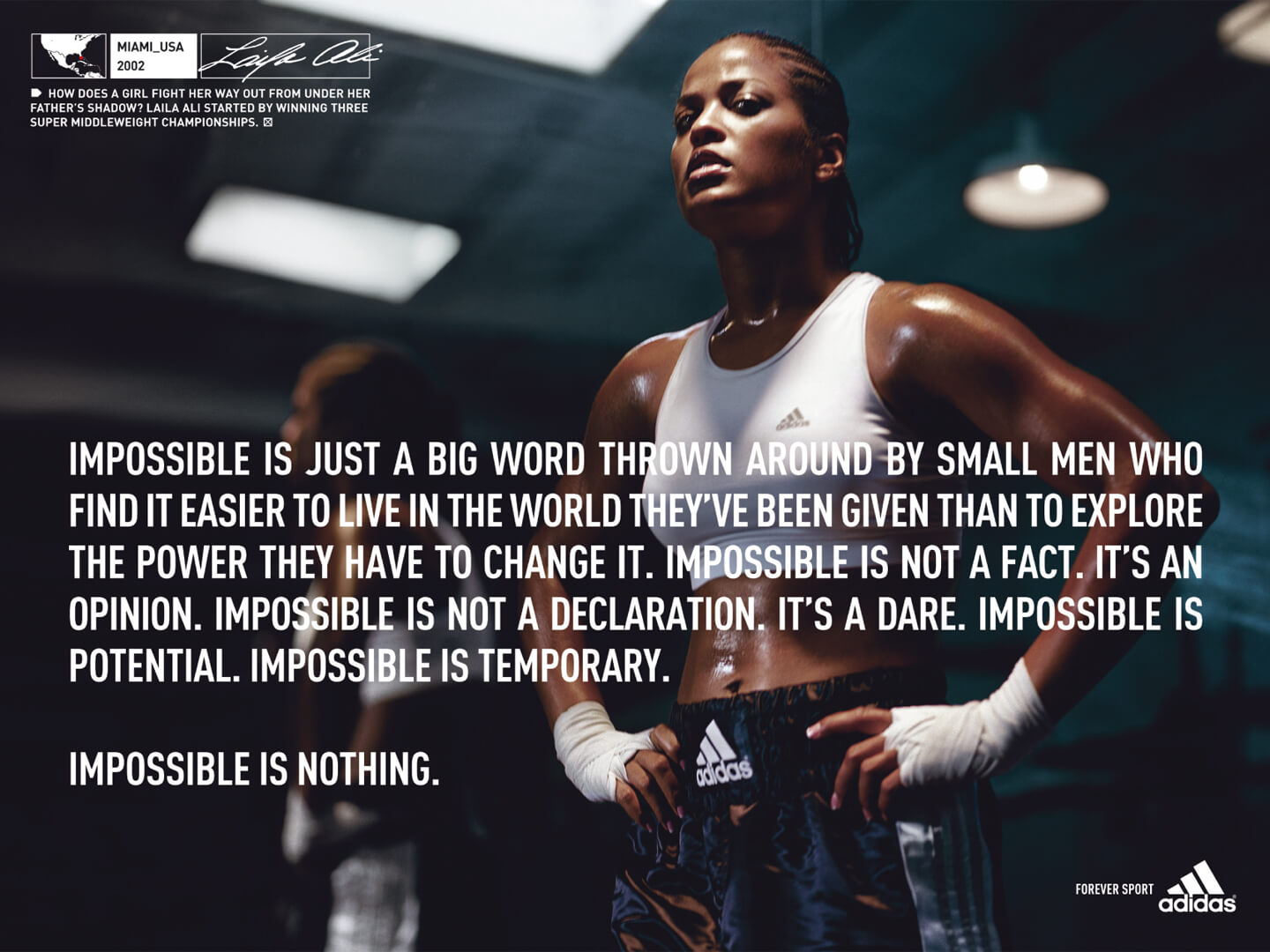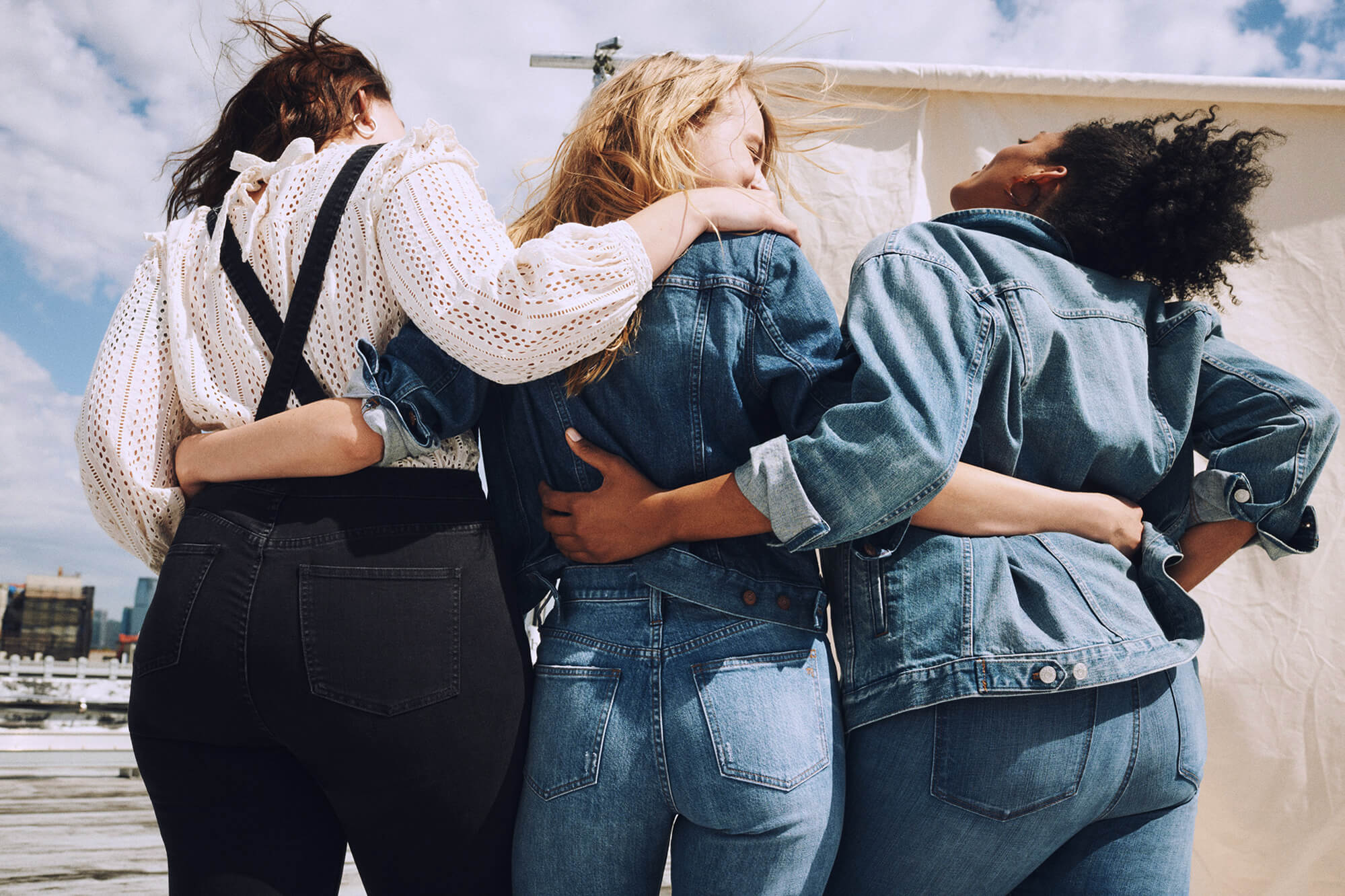
Do you remember the “Impossible is Nothing” campaign by Adidas? A quick refresh: the campaign highlighted boxing legend Muhammad Ali, long-distance runner Haile Gebrselassie, football icon David Beckham and NBA star Tracy McGrady, who challenge the impossible by taking risks, setting new records, changing conventions. It wasn’t about a sexy model or some state of the art technology or even a new pair of sneakers. It was a true story based on a athletes who struggled through all odds to emerge victorious. Over a decade has passed and the concept still resonates with most of us. This is because it was a real, authentic story. A story of triumph above devastating odds. We all retained the moral in our minds that sometimes the bad isn’t always that bad and can even result in something positive. We were left with the phrase “Impossible is nothing;” resonating like a scream of glory in our ears. Since then we associate Adidas with that spirit.

That in itself is storytelling. GOOD storytelling! Today, effective storytelling harnesses the power of social networks, not just to “share” content, but to illustrate a greater “narrative” behind the brand. The brands who are the best storytellers don’t take social media platforms as another distribution channel, but rather as a conversation channel; a transmission of experiences, feelings, values, dreams, failures, successes and truths. In short, they find a way to further the “narrative”, while always respecting the nature and audience of each social network.
With over 1 billion users worldwide, Instagram has long been one of the most effective digital marketing options for businesses. On Instagram, users expect to feel inspired, informed and intrigued. Entertained even. Which is why it is important for brands to create relationships between themselves and their users with engaging branded content.

To better understand how established brands integrate strong storytelling into their brand strategy, we took a deeper look at how Madewell and Levis attempt to stay relevant in the current market. What we found was an interesting approach to staying at the forefront of branding by leveraging their American legacy and history through inspirational visual storytelling and high quality created and curated content.
Madewell
With over a million followers on Instagram, MADEWELL has grown into a fashion brand to reckon with. The fashion brand views a denim-loving modern urbanista with a tomboyish flair as its target clientele. This consumer focus makes the brand a complete fit for Instagram (due to the platform’s demographic skew to younger females), while being almost a century old.
Due to this, Madewell is successful at defining their niche, which provides its users with engaging anecdotes of how Madewell products fit their everyday driving synergy between the brand and their client base. The brand uses Instagram as a channel of telling their story.

Living #MadeWell
As a denim brand, Madewell’s posts are laser-focused on the lifestyle surrounding creative denim lovers and jeans. They feature a variety of young professionals and creatives traversing life’s daily moments in denim or one of Madewell’s affordable accessories. Occasionally, posts focusing on handbags, footwear, simple leather goods or hats make a cameo, but still within the spirit of highlighting Madewell’s versatility for their audience. The posts are consistent with the brand’s message and main goal – to showcase how denim fits a customer’s lifestyle.
Social Meets Commerce
Not only has Madewell mastered the art of creating engaging visual content and captive photography but also social commerce through a virtual storefront. Many of their posts include product tags that link right to the item for instant purchase. This attention to creating highly visual shoppable content helped the brand to increase sales 39% in 2018. Their activity was also recognized during the 2018 Webby Awards, where they were nominated for overall best brand presence, in no small part because of their wizardry in social commerce.
Mixing Branded with Non-Branded Hashtags
Like most larger brands, Madewell leverages branded hashtags such as #everydaymadewell or #teammadewell for their daily posts and brand collaborations with social influencers. For brands of Madewell’s size, mixing in a few non-branded hashtags represent a genuine opportunity to reach new and related audiences. Even a post with average engagement is sure to be within the “featured pack” of posts for most hashtags with less usage. This in turn guarantees Madewell even greater exposure and wider reach as their audience adopts and accelerates the same hashtags with their user-generated content.
Levi’s
Levi’s needs far less introduction than Madewell. But is another Americana brand that has existed for almost two centuries now. Rather than targeting a specific consumer, Levi’s prides itself on being the denim of choice for every generation from farmers in Argentina to urban millennials in Japan or Spain and even retired boomers in the United States. While Levi’s need little introduction, it needs far more to stay relevant in a market saturated with contemporary and affordable denim brands.
Maintain Authenticity
“User generated content has become an integral part of our digital marketing strategy. The same way we gain insights from research to guide our strategies, we’re now using content from our fans.”
Jennifer Sey, Senior Vice President & Chief Marketing Officer of Levi’s
Levi’s does an excellent job of avoiding one of the biggest traps that Instagram poses for retail brands—losing authenticity. Instagram makes it too easy to fall into a pattern of over-promoting your products through repeated post of new product offers (especially with shoppable content), banners with recent sales and captions with links to purchase. However Levi’s clearly understands that the primary role of Instagram is not to be a direct sale platform.
Rather, Levi’s posts a wide variety of high-quality images that come from sources including professional photographers and their community as well. As a result, the content never feels over-produced or one-directional and maintains authenticity with followers. The images feel like they are coming from a person, not a brand.
This was true for Levi’s first promoted ad as well. The from-behind photograph features three young people staring over a cliff at the water. While they are wearing Levi’s product, there is no overt reference in the image and only a slight one in the caption, “Wear them wherever the road takes you. #LifeInLevis.” Within nine days, the Levi’s ad reached 7.4 million Americans ages 18-34.
Keeping it Simple
The beauty of Instagram is in its simplicity. It has a consistent, predictable format, making it easy to use and digest, while allowing for near unrivaled visual presentation. User friendliness is the essence of Instagram. Brands who reflect this simplicity do well; Levis for example stick to what they know – denim – with a nod obviously to one of Instagram’s most photographed items.
A few other denim brands killing the insta-game: Mott and Bow, Not Your Daughter’s Jeans and J Brand Jeans. Like Madewell and Levi’s, these companies use Instagram, not solely as a promotional vehicle, but to enhance their story and show how they fit in their audience’s busy lives. What are some of your favorite denim brands on Instagram and how do they use storytelling to drive their mission?
Featured Image: Falcon.io